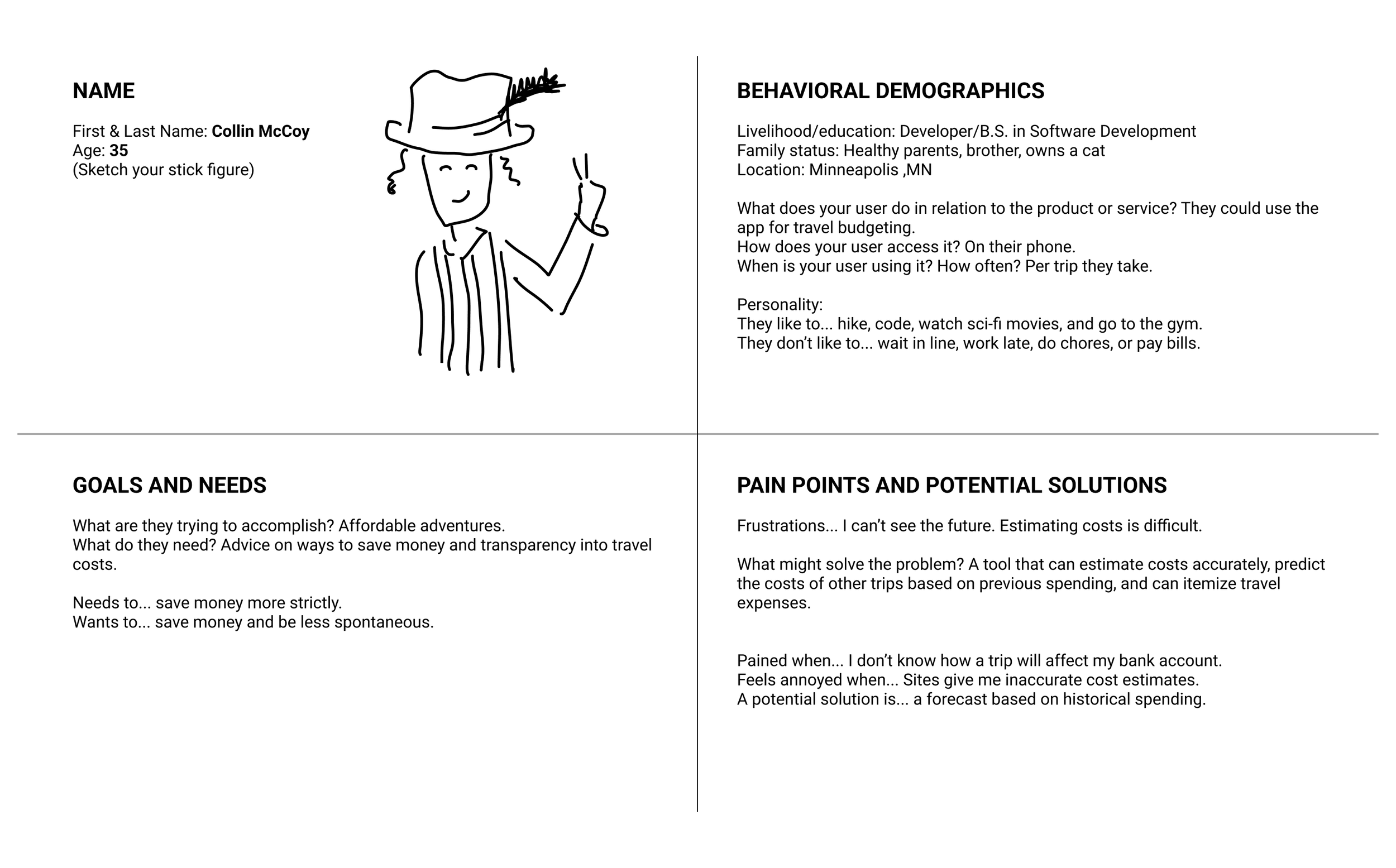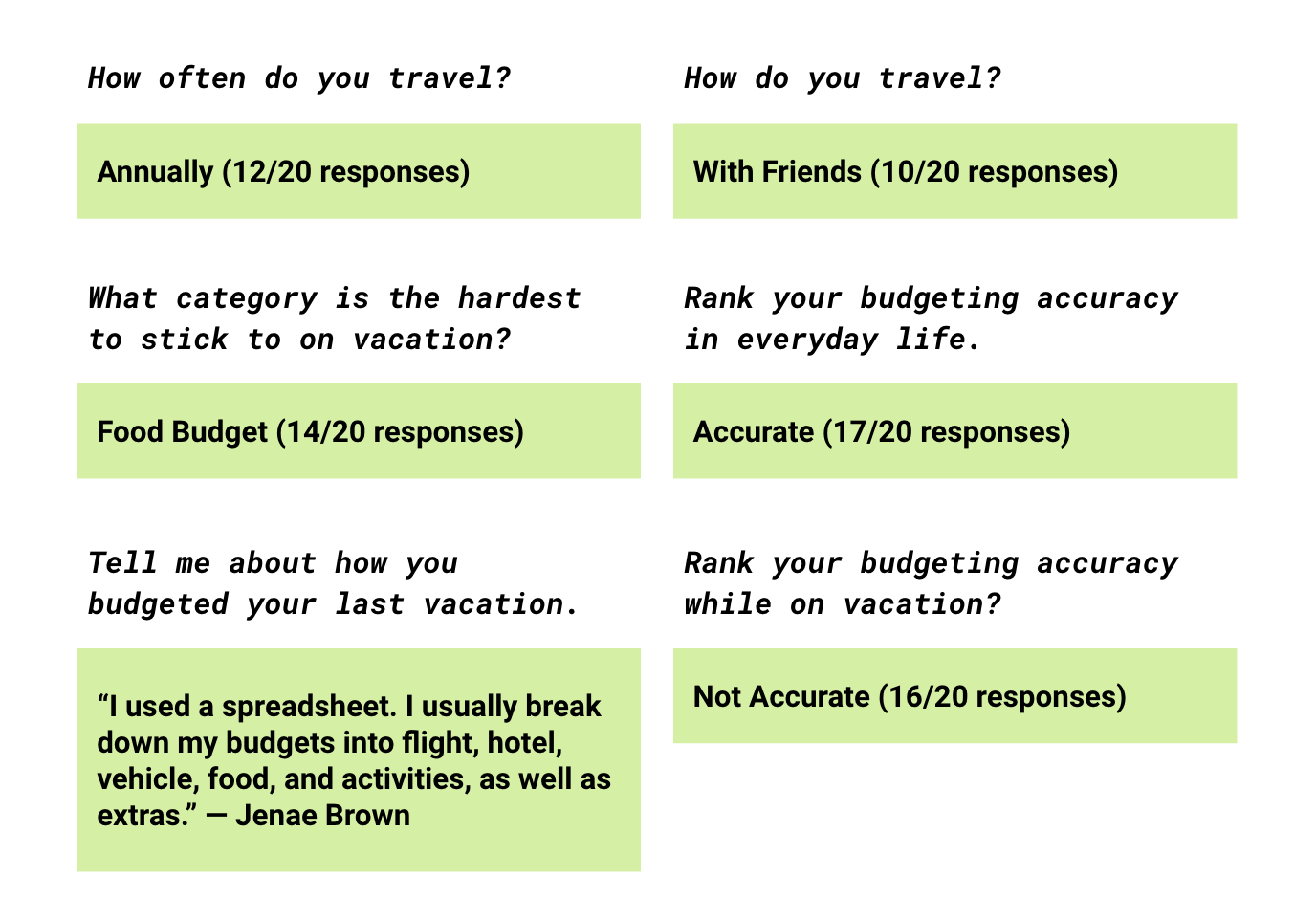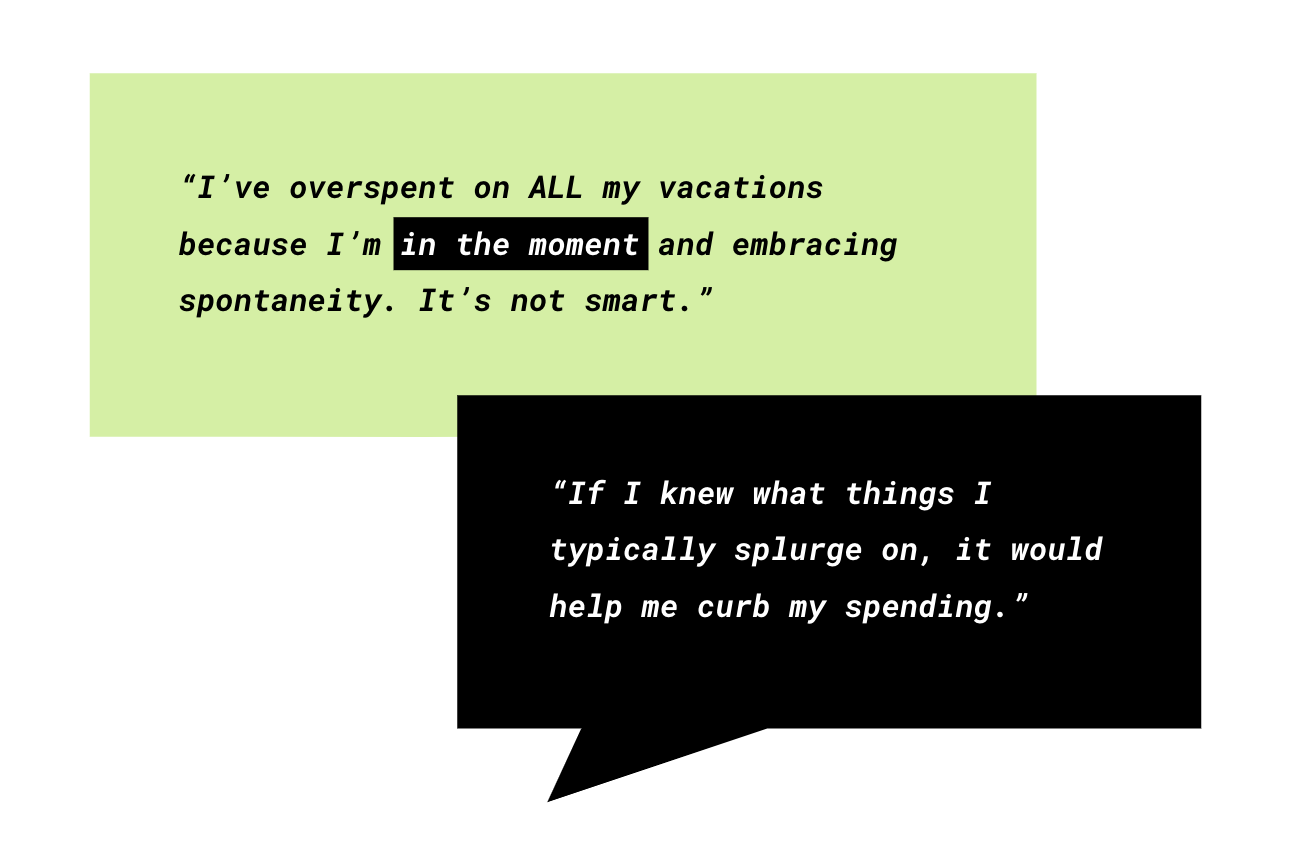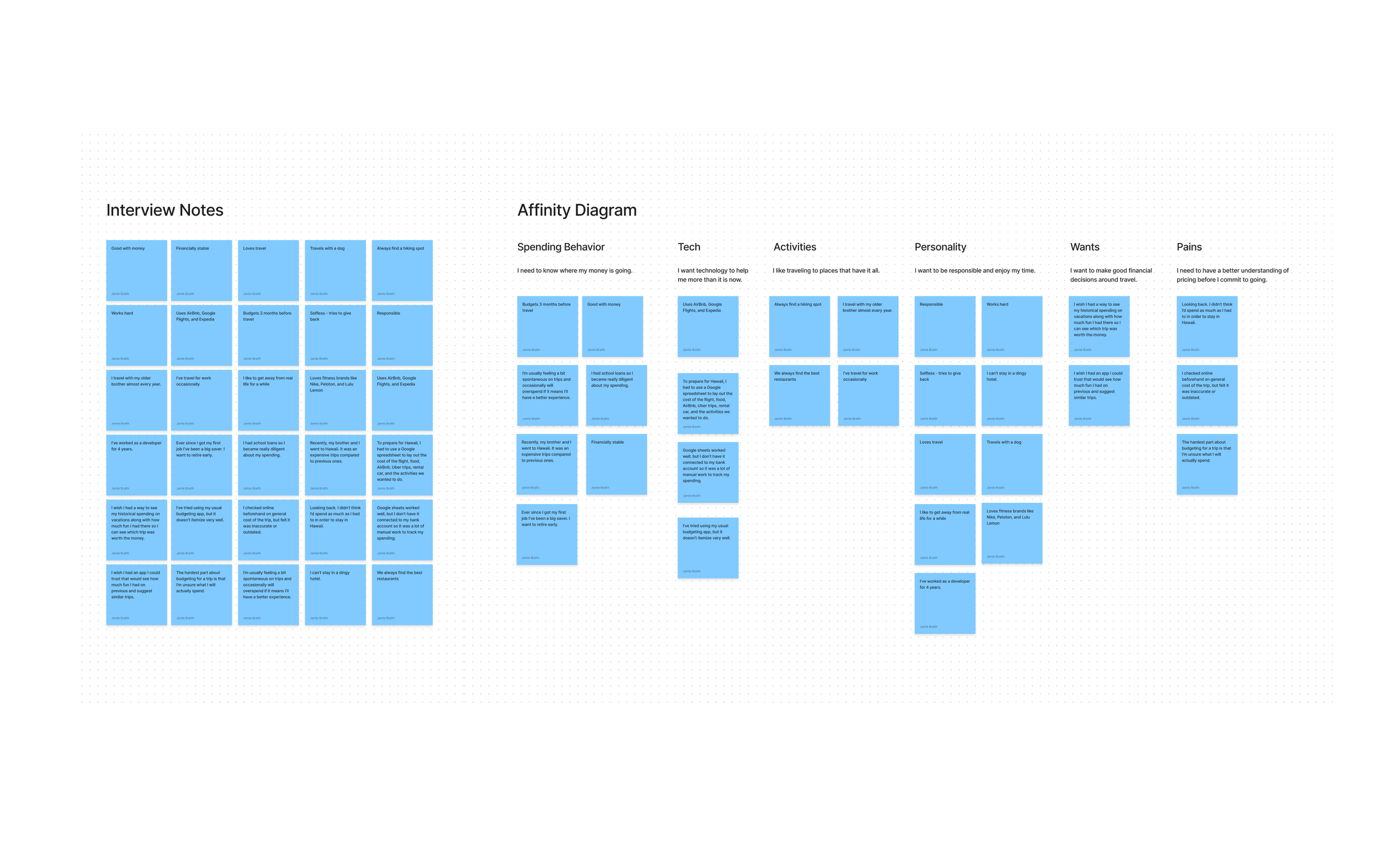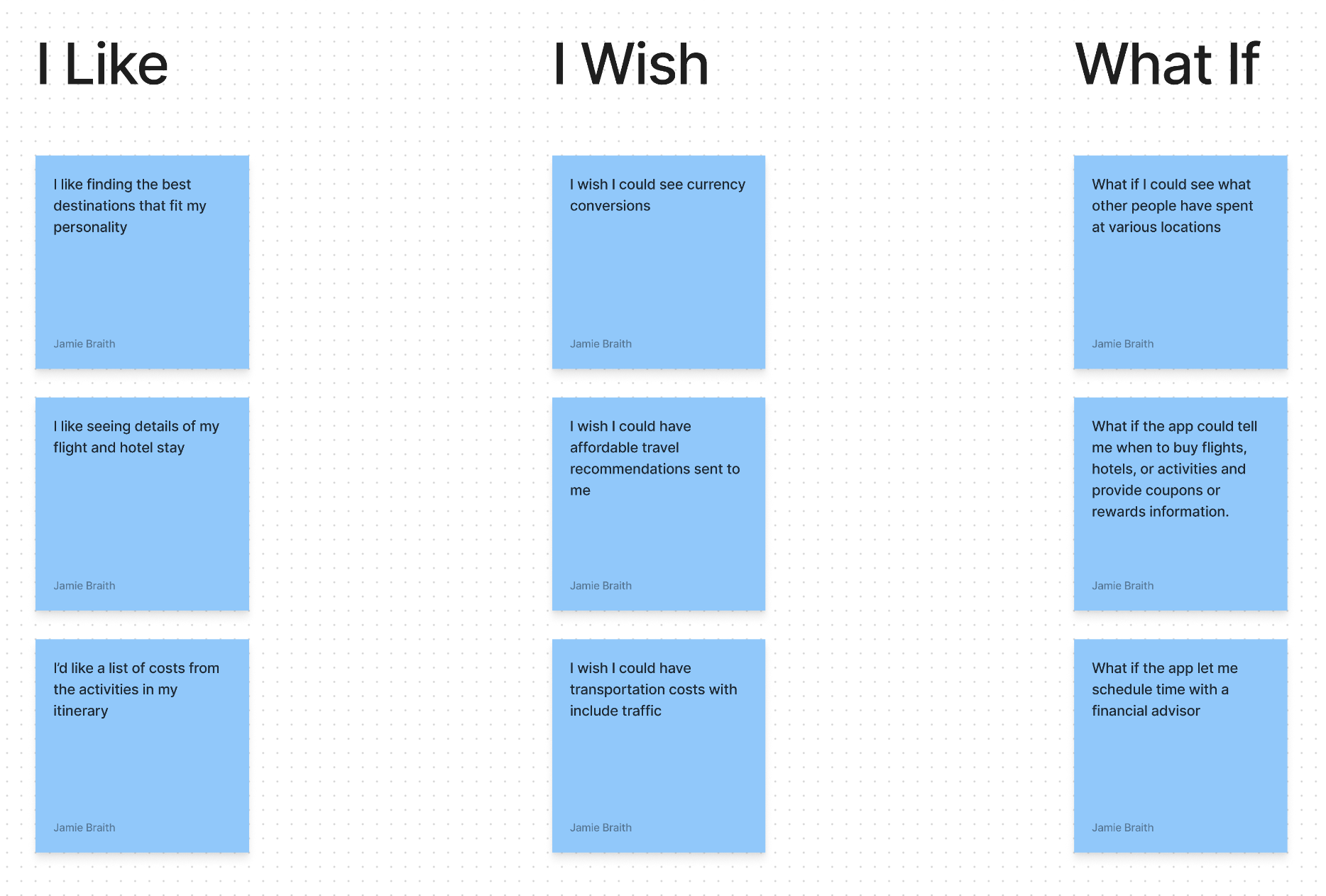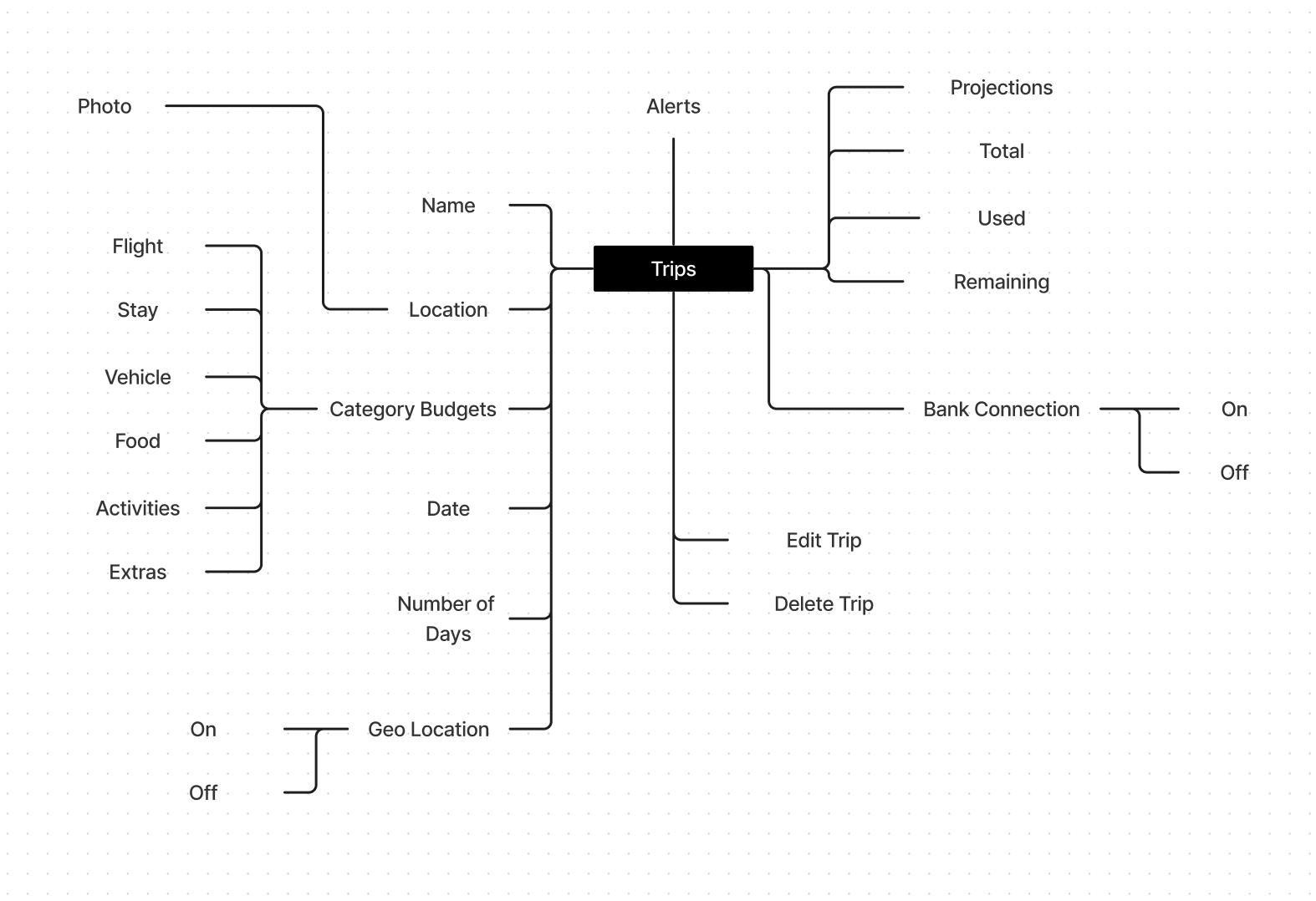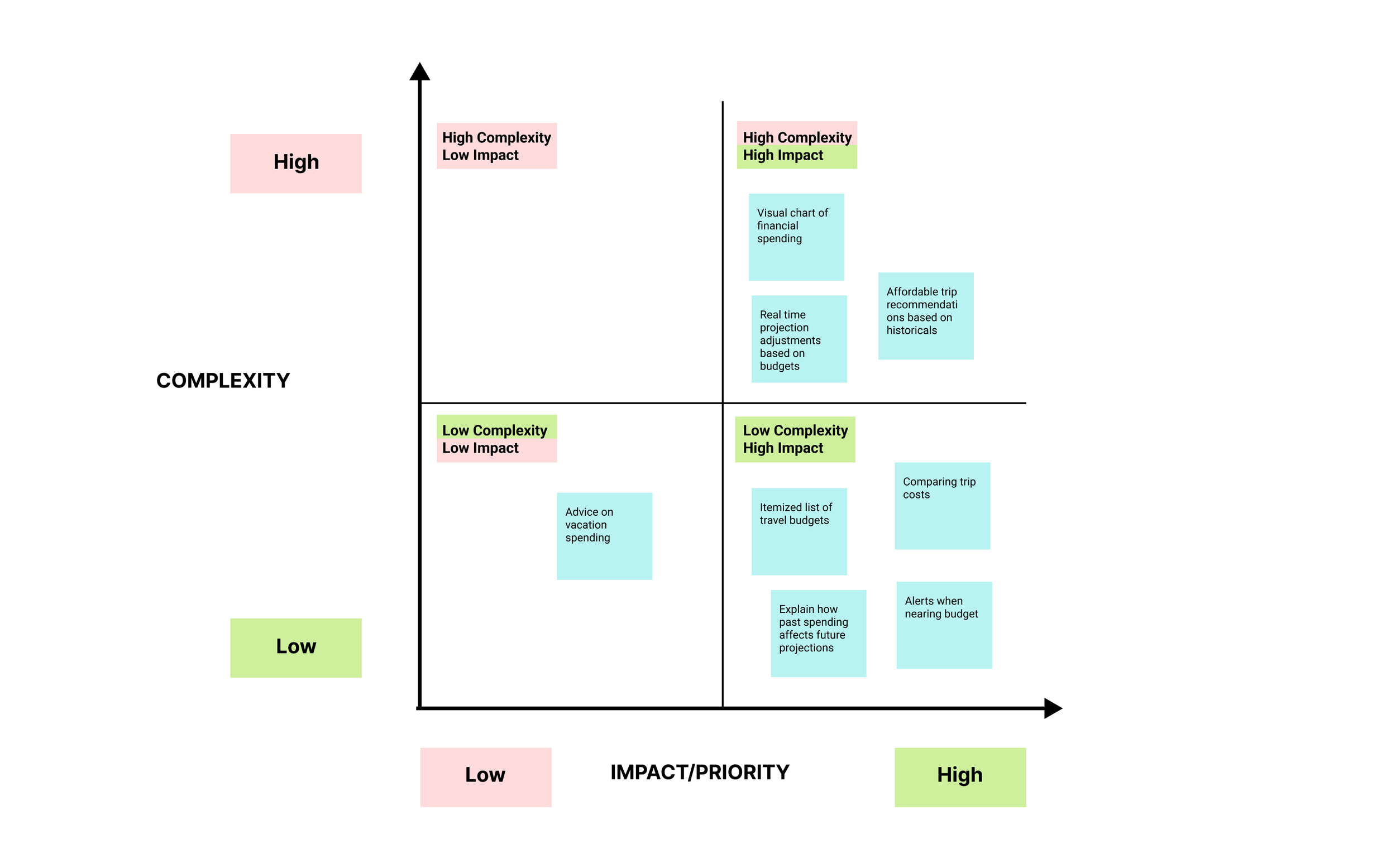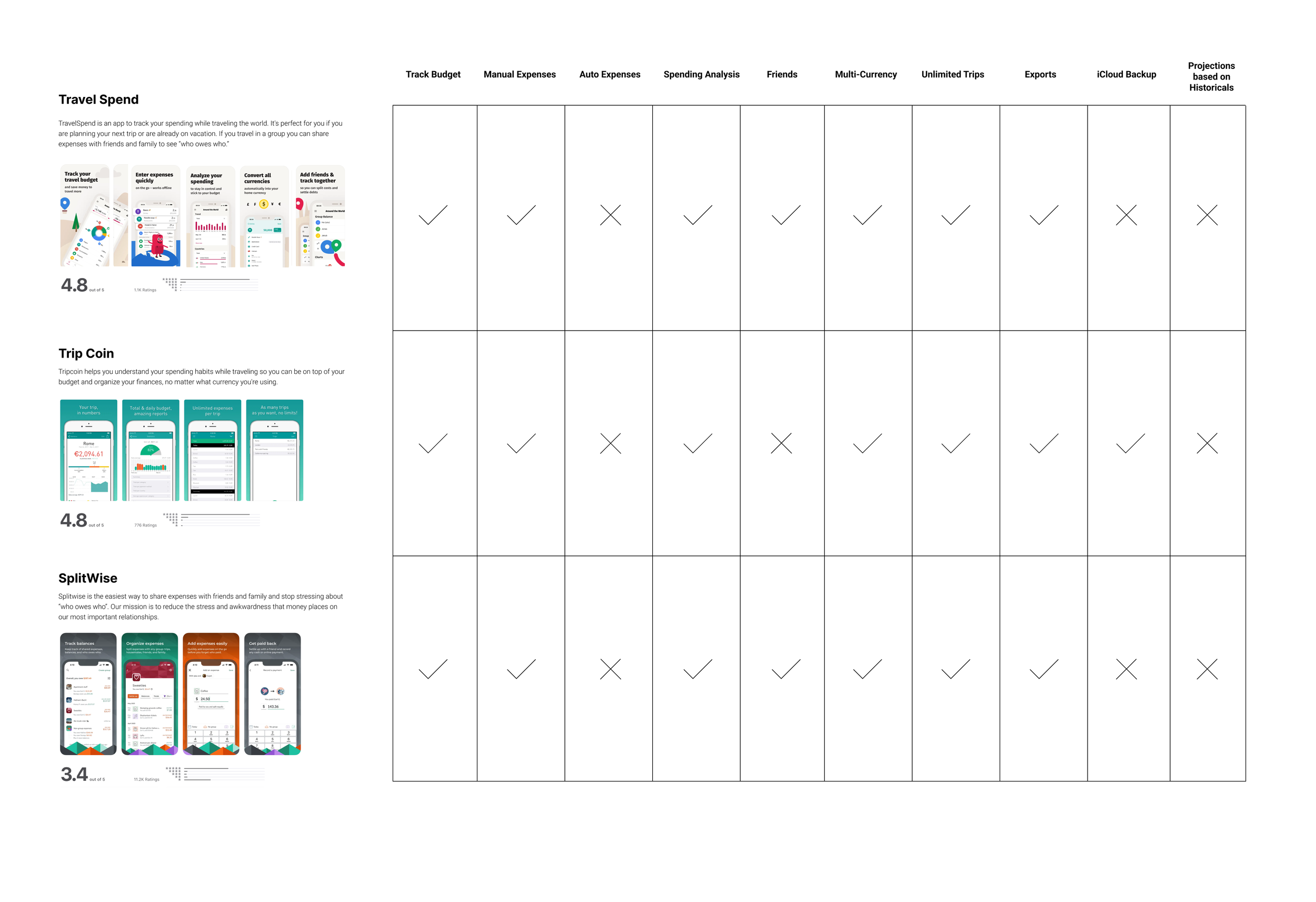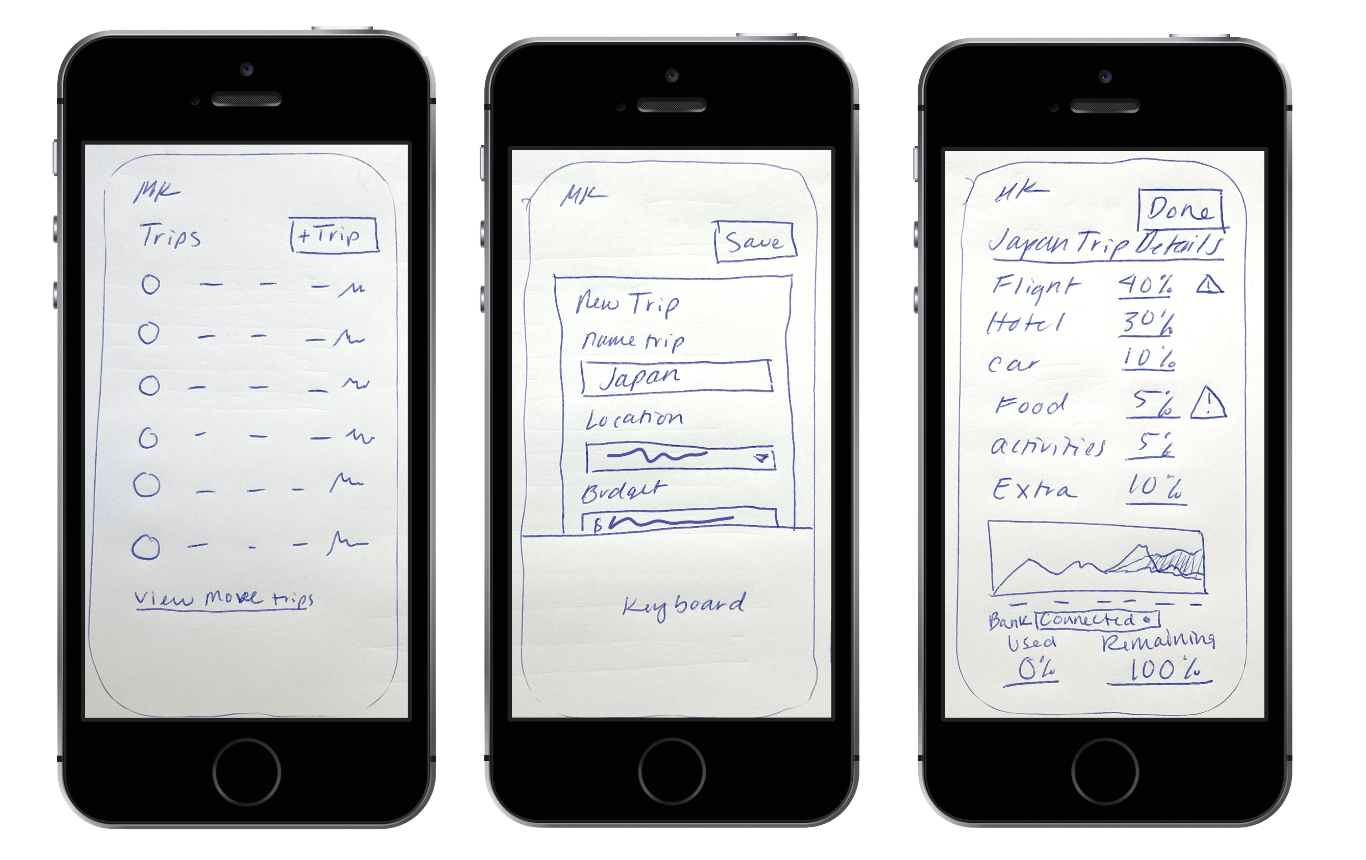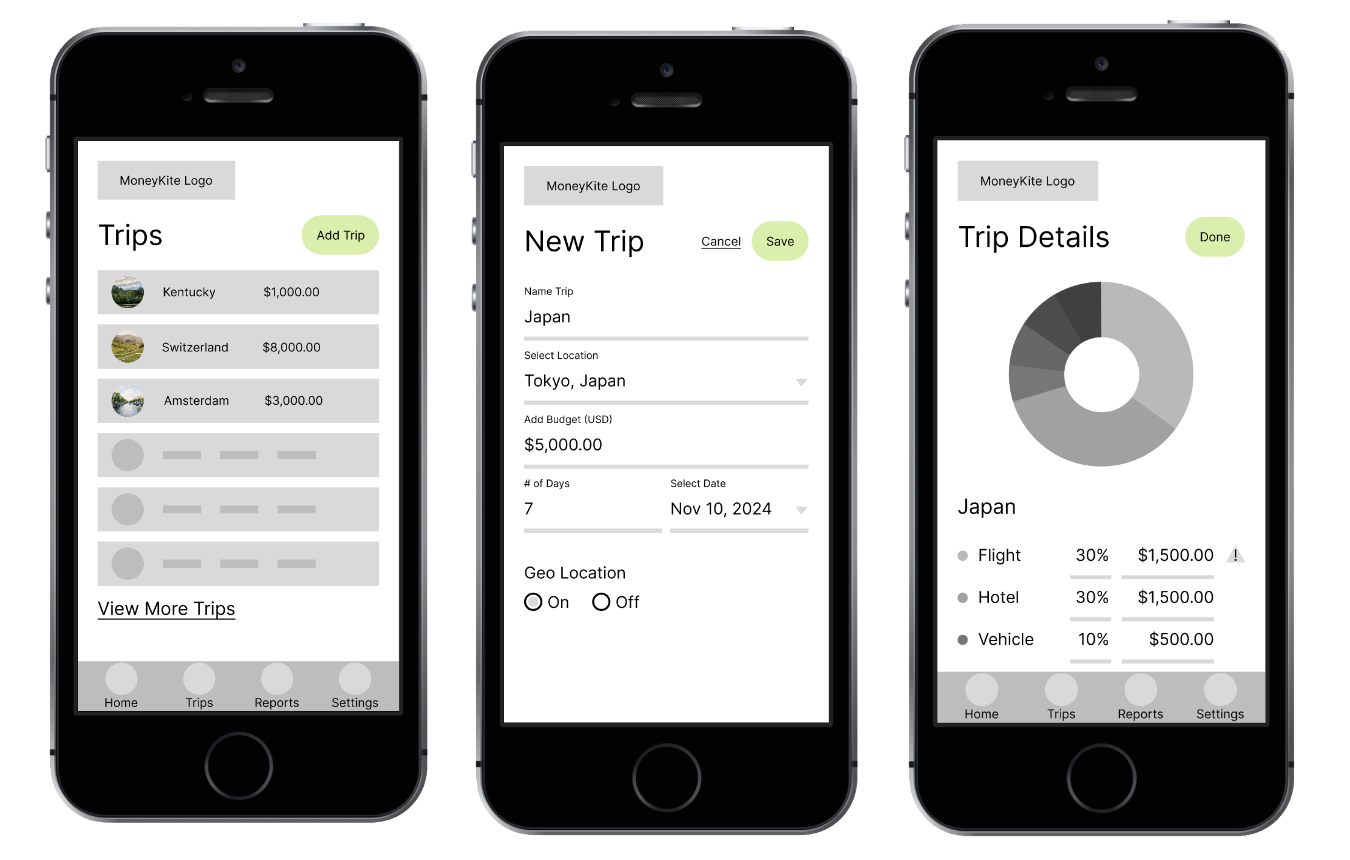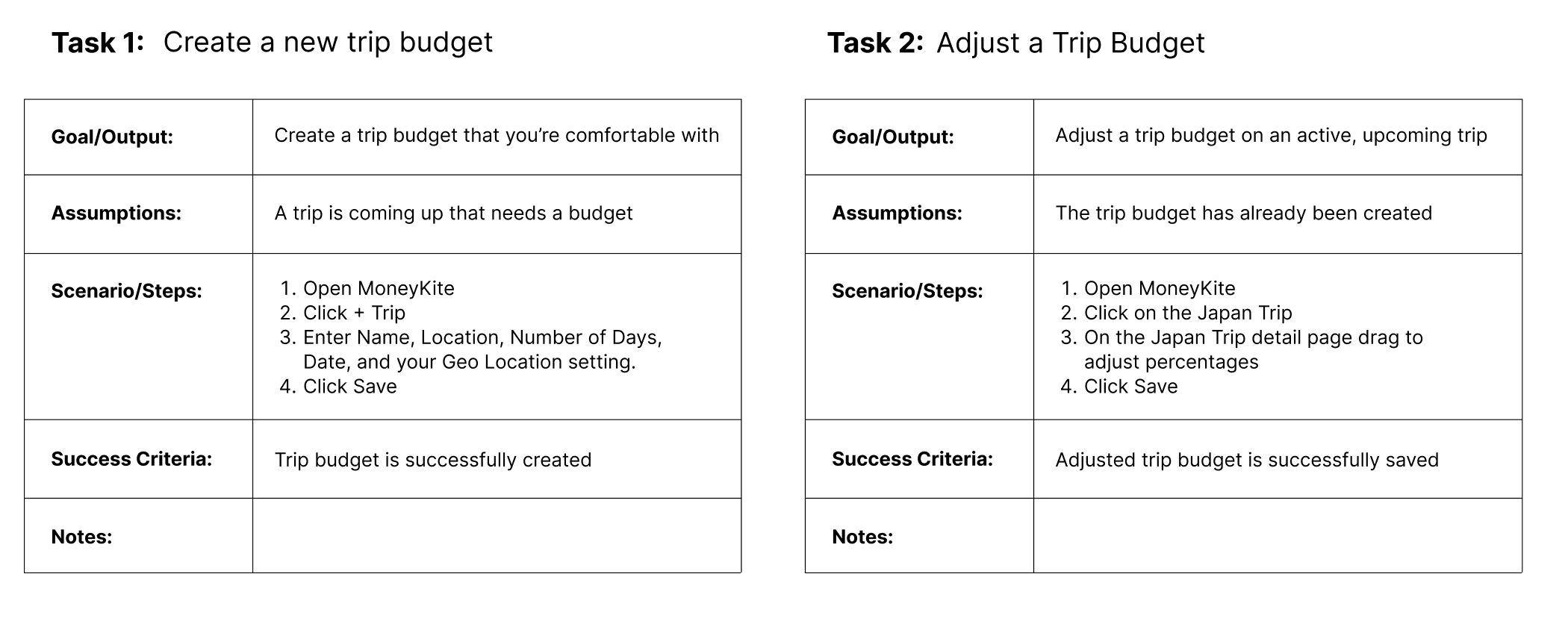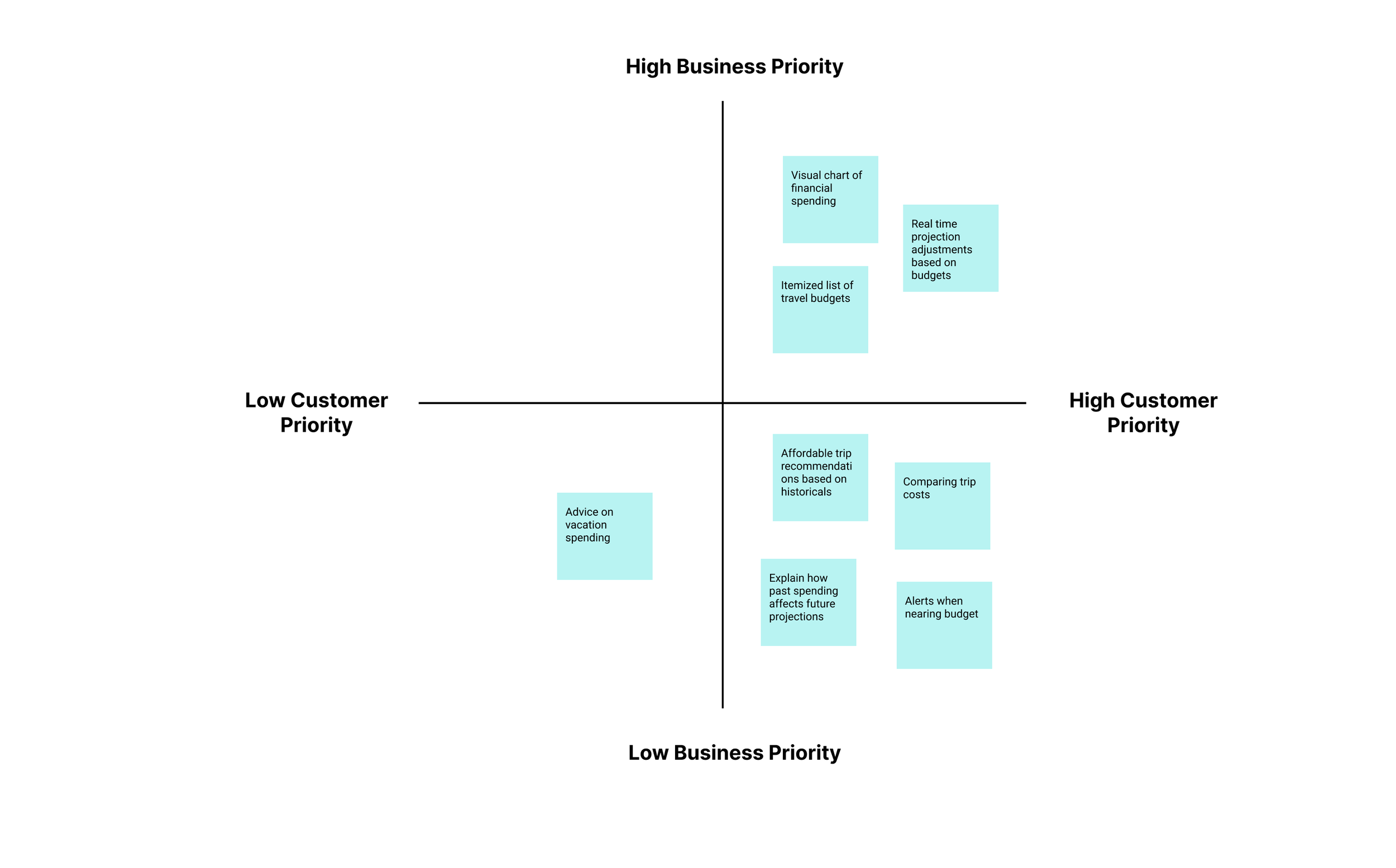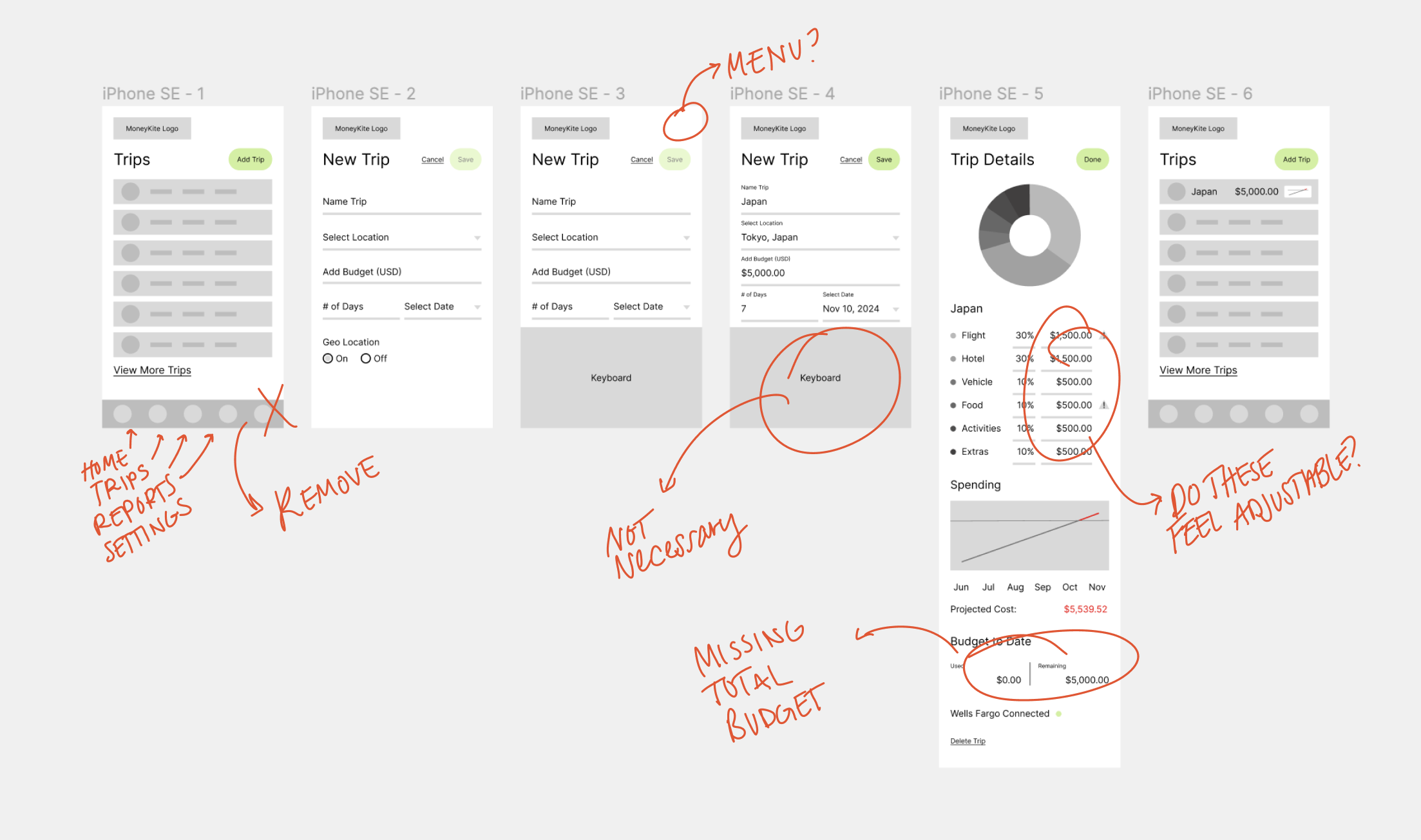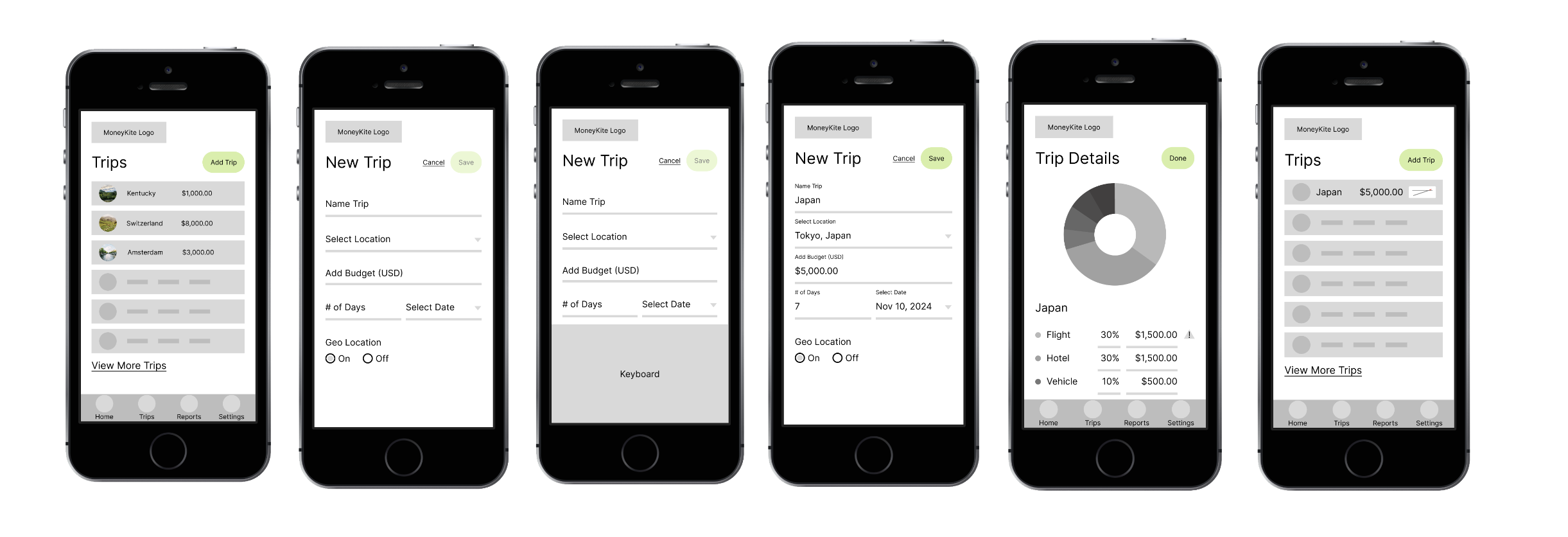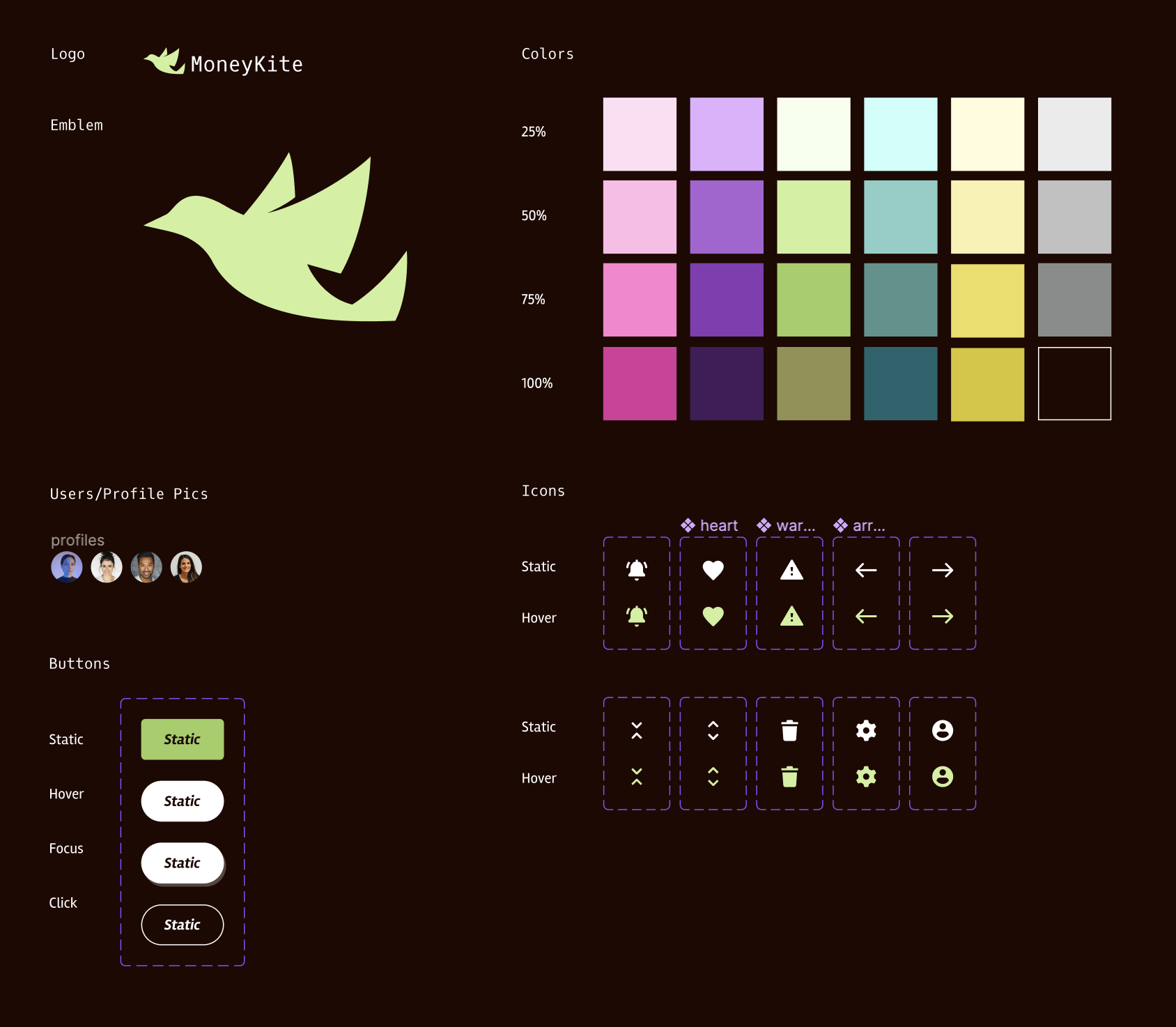MoneyKite Research
MoneyKite is a trip budgeting app that I created as a UI/UX Bootcamp Instructor to help provide examples to students.
PROJECT SUMMARY
THE PROBLEM:
Global travelers do not have enough foresight into their travel spending. Trips are notoriously difficult to plan for financially because the costs of travel varies and is always changing. If trip costs are inaccurate, people become more apprehensive to take trips.
THE SOLUTION:
Prevent frivolous spending by providing projections that use historical data to determine where users typically go over budget.
TOOLS:
Figma, Miro, Google Sheets, Google Docs
Proto Persona
We had a few assumptions about this group of people, for instance, we thought they’d be budget conscious, but successful.
Research Plan
LEAD (MODERATOR):
Jamie Braith
METHODS:
Remote Moderated User Interviews
Survey
TARGETED USER:
Travelers who are budget conscious
RESEARCH QUESTIONS (INTERNAL):
How are people financial-planning trips currently? Do they have common pain points?
RESEARCH GOAL:
We need to gather information around traveler spending behaviors and habits.
RESEARCH HYPOTHESIS:
If people are in a more frivolous mood while traveling, and are unaware of where their financial weaknesses are, then they will ignore their budget and overspend on their favorite things.
Interview Plan
Screener: Have you traveled to another state or country in the past?
OBJECTIVE 1: To learn more about their general passions and hobbies while traveling.
Where have you traveled in the past?
What types of costs do you take on while traveling?
OBJECTIVE 2: To understand people’s behaviors around saving and spending money.
What’s your relationship like with budgeting money in general?
Rank your budgeting success based on previous trips you’ve taken:
— Most of the time, Some of the time, Seldom, Never
OBJECTIVE 3: To learn how people are budgeting or not budgeting for trips today.
How do you currently go about preparing for trips financially?
We learned that people who had responsible spending habits in their everyday lives had issues sticking to a budget on vacation.
Affinity Map
We gathered our raw data from interviews, added them to sticky notes, and grouped them by theme: spending behavior, tech, activities, personality, wants, and pains. We learned that people struggled to guess what they’d actually spend.
Empathy Map
After talking with our customer segment, we understood our users more and could start empathizing with them.
User Persona
We originally thought our audience was primarily struggling with budgeting in general, but trip pricing is difficult to get a grasp of because it changes per location. Our persona needs help visualizing trip prices.
User Insight Statement: Collin needs to be cautious of his spending while on trips because he wants to travel as much as possible without worrying so much about money.
Problem Statement
Without foresight into trip costs and historical spending habits, travelers can’t see realistic projections of what they may actually end up spending. Without critical information, travelers will continue to overspend.
How might we… give travelers a reliable estimate of the total cost of their trip.
Brainstorming
We brainstormed ways we could provide value. We knew we needed to have a budget breakdown at minimum to get people back on the right track.
Mind Map
We broke down some of the data we might need to make the app functional.
Feature Prioritization Matrix
The features that made it to high impact and low complexity were: itemized budgets, alerts, comparing trip costs, and projections. This was our focus.
Value Prop Canvas
Our customer has a lot to gain from using the MoneyKite app. If users can be more frugal on trips, they can go on even more trips. We decided to add an overall cost savings to show just how much they have saved.
Storyboard
Many times, family members or friends will reach out asking to go on a trip. For our users, this can cause just as much excitement as unease.
User Journey Map
Our persona feels the most stress when they need to guess their budget for a trip. We heard they don’t have enough information to be accurate and they anticipate spending more than they budgeted for.
Competitor Analysis
Our competitors focus on splitting budgets with friends and tracking budgets.
This left the door wide open for us to be the best at budget forecasting. It was missing in the market, but a critical tool for our digital nomad audience.
Sketch Wireframes
We noticed after doing paper prototypes that certain areas, like the percentages fields, didn’t appear adjustable.
We knew this was something we could pull off in the mid and high-fidelity interface.
Digital Lo-Fi Wireframes
We conducted usability studies and found that our tasks were easily achievable. After a few rounds of edits, users generally seems to enjoy the experience.
Guerilla Testing
Research Goals: Find usability issues around trip creation and budgeting
Objectives: Determine if the trip creation and adjustment experience is user-friendly and provides value to the customer.
Participants: Barry Brown, Connie Marilyn, Darren McCormick, Greg Milman, Petra O’Dell
Testing Analysis & Insights
We knew an itemized list, visual chart, and projections would give us enough value to differentiate ourselves in the market.
Iterations
After usability tests, we needed to provide more context, make interactive elements more obvious, and add a total budget that was missing.
Low-Fidelity Wireframe
Mid-Fidelity MUI (Material UI) Wireframe
Mockup by freepik.com
The Start of a Style Guide
Hi-Fidelity Prototype Walkthrough
Conclusion
What We Learned
Defining the problem proved difficult because there were many problems to solve. Deciding on which features would make MoneyKite unique and valuable was critical to our success. We use projections to prevent overspending.
The user journey and user flows ensured all the steps could be put together to make a delightful experience. Gamification led to a more engaging hero space.
In the future, we want to incorporate machine learning suggestions to recognize spending habits on a grand scale. This would trigger messaging to the user and prompt behavior change tactics to prevent overspending. This is not limited to anchoring, goal setting, planning, and social support (community).

